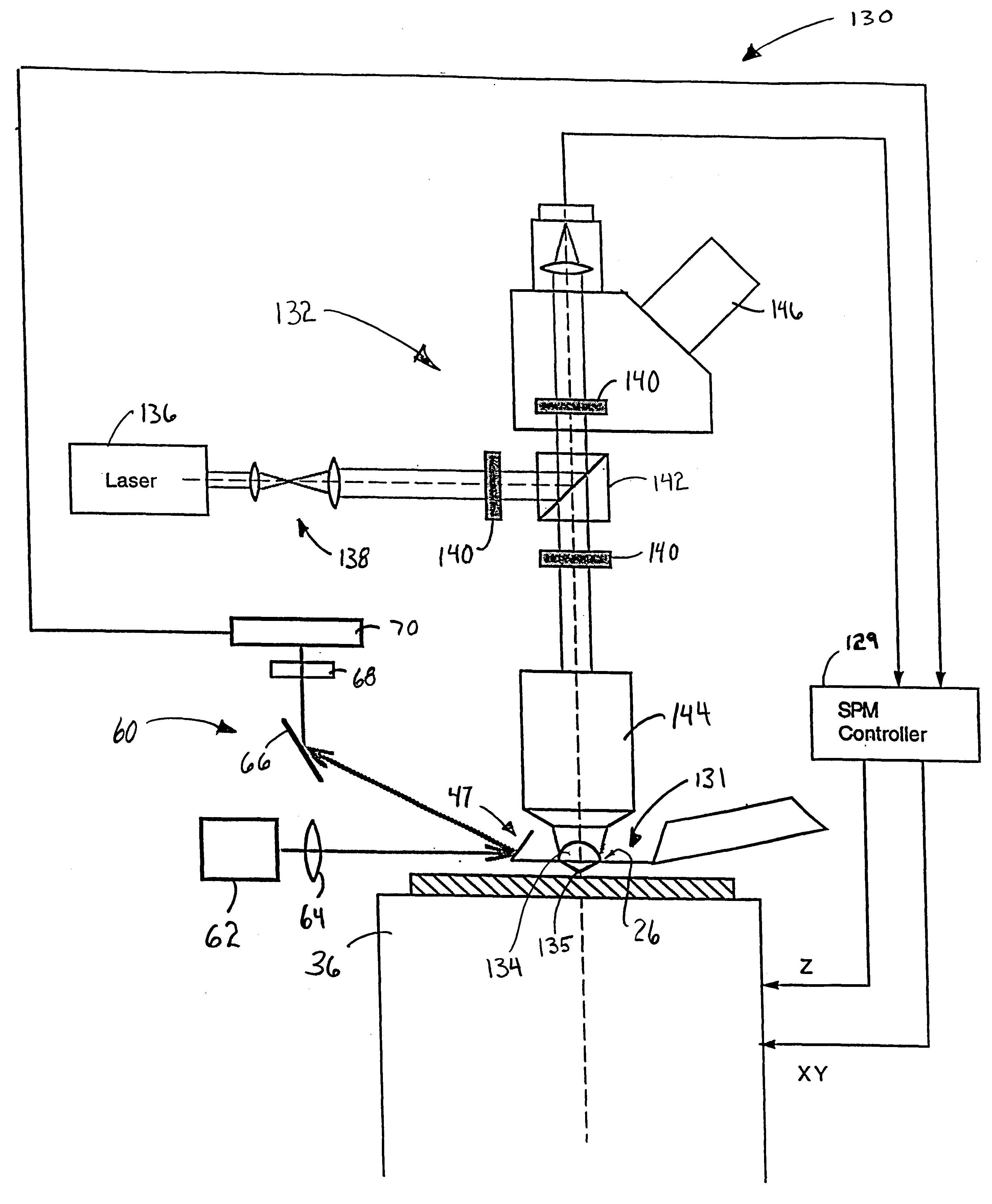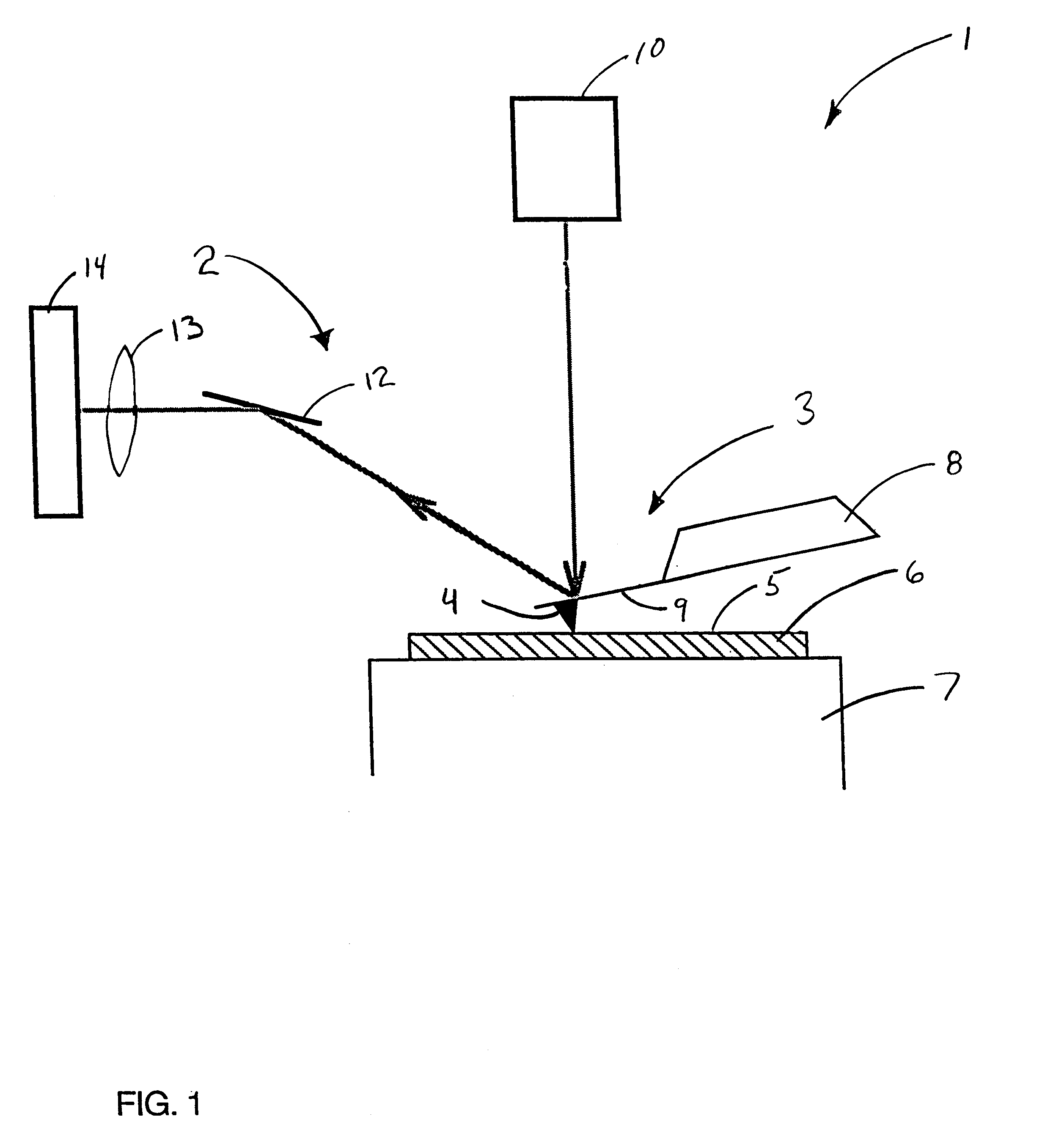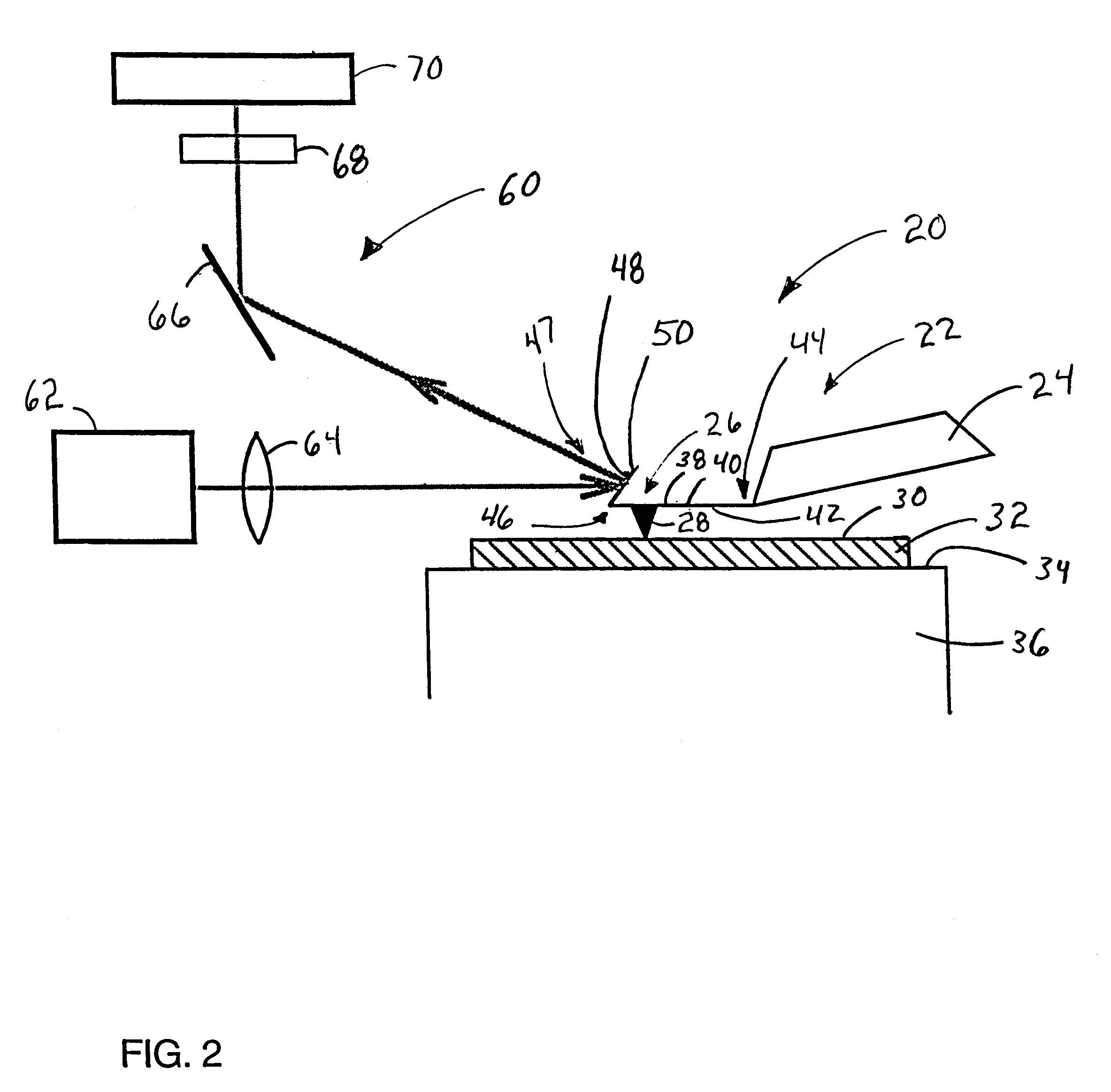Method and apparatus for atomic force microscopy
a technology of atomic force microscopy and apparatus, applied in the field ofatomic force microscopy, can solve the problems of difficult detection, high resolution optical imaging is therefore difficult to implement in combination with optical levers (or interferometers), near-field scanning optical microscopy,
- Summary
- Abstract
- Description
- Claims
- Application Information
AI Technical Summary
Problems solved by technology
Method used
Image
Examples
Embodiment Construction
Turning initially to FIG. 2, an AFM 20 of the preferred embodiment includes a probe assembly 22 including a cantilever 26 having a tip 28 extending downwardly therefrom to interact with surface 30 of a sample 32. Sample 32 is placed on a support surface 34 of a scanner 36 which causes movement of sample 32 so as to allow tip 28 to scan surface 30 and image, for example, the topography. Cantilever 26 has a planar body 38 having a top surface 40 and a bottom surface 42, and includes a first, fixed end 44 and a second, free end 46. Fixed end 44 of cantilever 26 is mounted to a substrate 24, while tip 28 is mounted generally adjacent second end 46. Notably, cantilever 26 can be microfabricated so as to have a length on the order of 100 microns, thus facilitating atomic resolution.
Scanner 36 is preferably a piezoelectric tube, but can be a stack of piezo-elements in combination with a mechanical flexure (not shown). Notably, a scanner could be mechanically coupled to substrate 24 to mani...
PUM
 Login to View More
Login to View More Abstract
Description
Claims
Application Information
 Login to View More
Login to View More - R&D
- Intellectual Property
- Life Sciences
- Materials
- Tech Scout
- Unparalleled Data Quality
- Higher Quality Content
- 60% Fewer Hallucinations
Browse by: Latest US Patents, China's latest patents, Technical Efficacy Thesaurus, Application Domain, Technology Topic, Popular Technical Reports.
© 2025 PatSnap. All rights reserved.Legal|Privacy policy|Modern Slavery Act Transparency Statement|Sitemap|About US| Contact US: help@patsnap.com



